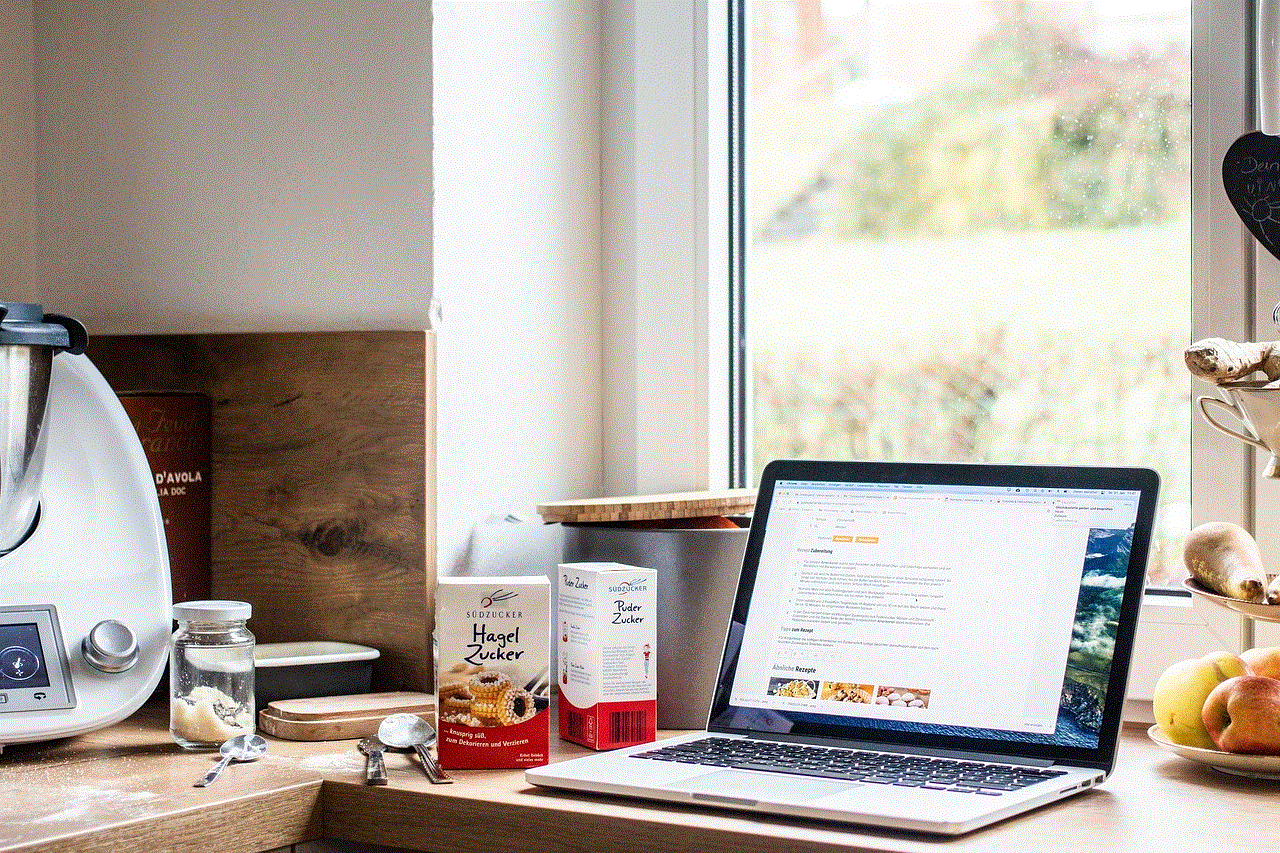how to uninstall mmguardian
MMGuardian is a parental control app that has been gaining popularity in recent years. It offers a wide range of features that allow parents to monitor and manage their child’s smartphone or tablet use. However, there may come a time when you no longer need or want to use MMGuardian and would like to uninstall it from your device. In this article, we will discuss the step-by-step process of how to uninstall MMGuardian and its various components.
Before we dive into the uninstallation process, let’s first understand what MMGuardian is and why it has become a popular choice among parents.
What is MMGuardian?
As mentioned earlier, MMGuardian is a parental control app that allows parents to monitor and control their child’s device usage. It offers a wide range of features such as app blocking, call and text monitoring, web filtering, location tracking, and screen time management. The app is available for both Android and iOS devices and can be downloaded from their respective app stores.
Why has MMGuardian gained popularity?
With the increasing use of smartphones and tablets among children, parents are becoming more concerned about their child’s online safety. MMGuardian offers a comprehensive solution to this problem by providing parents with the tools to monitor and manage their child’s device usage. The app is easy to use and offers a variety of features that can be customized according to the child’s age and maturity level.
Now that we have a brief understanding of what MMGuardian is, let’s move on to the main topic – how to uninstall the app.
Uninstalling MMGuardian from Android devices:
Step 1: Open the MMGuardian app on your child’s device and go to “Settings.”
Step 2: Scroll down and click on “Uninstall MMGuardian.”
Step 3: A pop-up window will appear asking for a PIN. Enter the PIN, and the app will be uninstalled from the device.
Step 4: If you do not remember the PIN, you can retrieve it by clicking on “Forgot PIN” and following the instructions.
Step 5: Once the app is uninstalled, you can go to the Google Play Store and search for “MMGuardian” in the search bar.
Step 6: Click on the app and then click on “Install” to reinstall MMGuardian on the device.
Uninstalling MMGuardian from iOS devices:
Step 1: On your child’s device, go to “Settings” and click on “General.”
Step 2: Scroll down and click on “Device Management.”
Step 3: Click on “MMGuardian” and then click on “Remove Management.”
Step 4: A pop-up window will appear asking for a passcode. Enter the passcode, and the app will be uninstalled from the device.
Step 5: If you do not remember the passcode, you can retrieve it by going to the MMGuardian website and clicking on “Forgot Passcode.”
Step 6: Once the app is uninstalled, you can go to the App Store and search for “MMGuardian” in the search bar.
Step 7: Click on the app and then click on “Install” to reinstall MMGuardian on the device.
Uninstalling MMGuardian from a computer:
If you have installed MMGuardian on your child’s computer, you can uninstall it by following these steps:
Step 1: Go to “Control Panel” and click on “Programs and Features.”
Step 2: Look for “MMGuardian” in the list of installed programs and click on it.
Step 3: Click on “Uninstall” and follow the instructions to complete the process.
Step 4: Once the app is uninstalled, you can go to the MMGuardian website and log in to your account.
Step 5: Click on “Remove Device” next to your child’s device, and the app will be removed from the computer.
Uninstalling MMGuardian from a web browser:
If you have installed MMGuardian on your child’s device using a web browser, you can uninstall it by following these steps:
Step 1: Go to the MMGuardian website and log in to your account.



Step 2: Click on “Remove Device” next to your child’s device.
Step 3: A pop-up window will appear asking for a PIN or passcode. Enter the PIN or passcode, and the app will be uninstalled from the device.
Step 4: If you do not remember the PIN or passcode, you can retrieve it by clicking on “Forgot PIN” or “Forgot Passcode.”
Step 5: Once the app is uninstalled, you can go to the app store on your child’s device and search for “MMGuardian” in the search bar.
Step 6: Click on the app and then click on “Install” to reinstall MMGuardian on the device.
What happens after uninstalling MMGuardian?
After uninstalling MMGuardian, all the restrictions, settings, and data associated with the app will be removed from the device. This means that your child will have unrestricted access to their device, and you will no longer be able to monitor or manage their usage. If you wish to reinstall the app, you will have to go through the setup process again and set up all the features according to your preferences.
In conclusion, MMGuardian is a powerful tool for parents to monitor and control their child’s device usage. However, if you no longer need or want to use the app, you can easily uninstall it from your child’s device by following the steps mentioned above. It is important to note that once the app is uninstalled, you will no longer have control over your child’s device, so make sure to have an open and honest conversation with your child about their online behavior and set appropriate boundaries.
why is snap map not working
Snap Map is a popular feature on the social media platform, Snapchat , that allows users to share their location with friends in real-time. It was introduced in 2017 and quickly gained popularity among Snapchat users. However, many users have reported facing issues with the Snap Map feature, leading to the question, “why is Snap Map not working?” In this article, we will explore the possible reasons behind the malfunctioning of Snap Map and discuss ways to resolve these issues.
Snap Map relies on the user’s device’s GPS and internet connection to accurately track their location. This means that if there are any issues with the GPS or internet connection, Snap Map may not function properly. One of the most common reasons for Snap Map not working is a weak or unstable internet connection. If the user’s internet connection is slow or intermittent, it may affect the accuracy of their location on Snap Map. This can be frustrating for users, especially when trying to meet up with friends or share their location for safety reasons.
Another possible reason for Snap Map not working is the user’s device’s location settings. For Snap Map to function correctly, the user must have their device’s location services turned on. If the location services are disabled, Snap Map will not be able to track the user’s location and display it on the map accurately. It is essential to ensure that the location services are enabled for both the Snapchat app and the device itself.
Similarly, if the user’s device’s battery saver mode is turned on, it may affect the functionality of Snap Map. Battery saver mode restricts certain apps from using the device’s resources, including GPS, to conserve battery life. This can interfere with Snap Map’s ability to track the user’s location accurately. To resolve this issue, the user can either turn off battery saver mode or add the Snapchat app to the list of exempted apps.
Apart from technical issues, Snap Map may also not work due to privacy settings. Snapchat allows users to select who can see their location on Snap Map – either all friends, select friends, or no one. If the user has selected the option to share their location with select friends, they must ensure that the friends they want to share their location with are added to the list. Otherwise, their location will not be visible to anyone on Snap Map.
Another aspect of Snap Map’s privacy settings is the Ghost Mode feature. Ghost Mode allows users to hide their location from all friends on Snap Map. If this feature is enabled, the user’s location will not be visible to anyone, and they will not be able to see their friends’ locations either. If the user has accidentally turned on Ghost Mode, it may be the reason why Snap Map is not working for them. They can turn off this feature by going to their Snap Map settings and toggling off Ghost Mode.
Moreover, Snap Map may not work if the user’s Snapchat app is outdated. Snapchat regularly releases updates to improve the app’s performance and fix any bugs or glitches. If the user has not updated their app to the latest version, it may cause issues with Snap Map’s functionality. It is recommended to regularly check for updates and keep the app up-to-date to avoid any problems with Snap Map.



In some cases, Snap Map may not work due to a technical issue with the app itself. This can happen after a new update is released, and there are bugs or glitches that need to be fixed. In such cases, the user can try force closing the app and restarting their device. If the problem persists, they can try uninstalling and reinstalling the Snapchat app to see if that resolves the issue.
Another common reason for Snap Map not working is that the user’s device’s operating system is not compatible with the Snapchat app. Snapchat requires the device to run on at least iOS 10 or Android 4.4 to function correctly. If the user’s device is running on an older version, the app may not work correctly, and Snap Map may not function. In such cases, the user can check for an operating system update and install it to ensure compatibility with the Snapchat app.
Additionally, Snap Map may not work if the user has not granted the necessary permissions to the Snapchat app. For Snap Map to function correctly, the user needs to allow the app to access their device’s GPS, camera, and storage. If these permissions are not granted, Snap Map will not work correctly. The user can check and manage app permissions in their device’s settings.
In rare cases, Snap Map may not work due to a bug or glitch in the app itself. This may happen if the user has recently updated their app, and the update has caused some issues. In such cases, the user can contact Snapchat support and report the problem. Snapchat has a dedicated support team that works to resolve any issues reported by users.
In conclusion, there can be several reasons why Snap Map is not working for a user. These include technical issues, privacy settings, outdated app, incompatible operating system, and app permissions. By troubleshooting these issues and following the necessary steps, users can resolve the problems and get Snap Map to function correctly again. Snapchat is continually working to improve the app’s performance, and it is recommended to keep the app updated to avoid any issues with Snap Map.
why is restricted mode not turning off
Restricted mode is a feature on various online platforms that allows users to filter out potentially mature or inappropriate content. It is designed to protect younger audiences from accessing content that may be deemed unsuitable for their age. However, there have been instances where users have encountered issues with restricted mode not turning off, despite trying to disable it. This has sparked frustration and confusion among users, who are left wondering why the feature is not working as intended. In this article, we will explore the reasons behind this issue and potential solutions for users who are facing this problem.
Before delving into the reasons for restricted mode not turning off, it is essential to understand how this feature works. Restricted mode is available on various platforms, including YouTube , Google, and TikTok. It uses a combination of automated systems and community flagging to identify and filter out inappropriate content. This content includes violence, explicit language, and mature themes. When restricted mode is enabled, the platform’s algorithm filters out the content, making it inaccessible to users.
Restricted mode is often turned on by default on a user’s account. This means that unless they manually disable it, they will not have access to potentially inappropriate content. While this feature is primarily targeted towards younger audiences, it is also used by some adults to filter out sensitive content. However, there have been instances where users have reported that they are unable to turn off restricted mode, even after following the necessary steps. So, why is this happening?
One of the most common reasons for restricted mode not turning off is that the user’s account is managed by a parent or guardian. In such cases, the parent or guardian has the authority to enable and disable restricted mode. This is done to ensure that children are not exposed to inappropriate content. Therefore, if a user is unable to turn off restricted mode, they may need to check if their account is managed by a parent or guardian.
Another reason for restricted mode not turning off is that the user is accessing the platform through a school or organization. In such cases, the organization may have enabled restricted mode for all users to ensure the safety of students or employees. This is a common practice in educational institutions, where access to certain content is restricted to maintain a safe learning environment. In such cases, the user may need to contact the organization’s IT department to request the disabling of restricted mode.
The issue of restricted mode not turning off can also arise due to a glitch or bug in the platform’s system. Like any other technology, online platforms are not immune to technical difficulties. If a user is facing this problem, it is advisable to check if the platform is experiencing any known issues or outages. In such cases, the user may need to wait for the platform to resolve the issue before being able to turn off restricted mode.
Another reason for restricted mode not turning off is that the user’s device has parental controls enabled. Many devices, including smartphones, laptops, and tablets, have built-in parental control features that allow parents to monitor and limit their child’s online activities. If the user is using a device with parental controls enabled, they may need to disable them before being able to turn off restricted mode.
One of the most frustrating reasons for restricted mode not turning off is that the user’s account has been flagged for inappropriate content. As mentioned earlier, restricted mode uses a combination of automated systems and community flagging to filter out inappropriate content. If a user’s account has been flagged for violating the platform’s community guidelines, they may not be able to turn off restricted mode. This is done to ensure that the user does not have access to potentially harmful content. In such cases, the user may need to appeal the flag or wait for it to expire before being able to turn off restricted mode.
Another common issue that can cause restricted mode not to turn off is that the user is not signed into their account. Restricted mode is tied to a user’s account, and if the user is not signed in, the feature will remain enabled. This can happen if the user has cleared their browser history or is using a different device. In such cases, the user will need to sign into their account to turn off restricted mode.
Another potential reason for restricted mode not turning off is that the user has not cleared their browser cookies and cache. When a user visits a website, their browser stores cookies and cache files to enhance their browsing experience. However, these files can sometimes cause issues with certain features on the website, including restricted mode. If a user is facing this problem, they may need to clear their browser cookies and cache and then try to turn off restricted mode again.
One of the lesser-known reasons for restricted mode not turning off is that the user has a restricted mode extension installed on their browser. These extensions, which are typically used to bypass restricted mode, can sometimes interfere with the platform’s system, causing restricted mode not to turn off. If a user has a restricted mode extension installed, they may need to disable it to turn off restricted mode successfully.



Lastly, a user’s location can also be a reason for restricted mode not turning off. Some countries have strict regulations regarding online content, and platforms may have to comply with these regulations by enabling restricted mode for all users in that location. In such cases, the user may need to use a virtual private network (VPN) to change their location and be able to turn off restricted mode.
In conclusion, restricted mode is a feature that has been designed to protect users from potentially harmful content. However, it can be frustrating for users when they are unable to turn off this feature. In this article, we have explored some of the reasons why restricted mode may not be turning off and potential solutions for users facing this issue. If a user is still unable to turn off restricted mode after trying these solutions, they may need to reach out to the platform’s support team for further assistance.